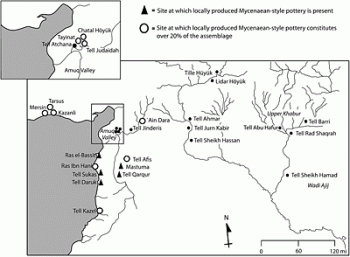American Journal of Archaeology | The Journal of the Archaeological Institute of America
You are here
Tracking the Cooking Pot à la stéatite: Signs of Cyprus in Iron Age Syria
October 2008 (112.4)
Tracking the Cooking Pot à la stéatite: Signs of Cyprus in Iron Age Syria
The cooking pot à la steatite first appears at sites along the Syrian coast in the 12th century. Until recently, these cooking pots were considered an essentially Iron I coastal phenomenon with a few isolated appearances inland. New research indicates that these cooking pots can actually be tracked throughout Iron I and II as they penetrated inland Syria by way of the Orontes River, ultimately to become one of the dominant cooking pot forms of the later Iron Age. Both technological and stylistic elements of even the earliest variants show a strong relationship with Cypriot cooking wares; moreover, its distribution is largely consistent with the distribution of locally produced Mycenaean-style pottery in Syria. This study explores the Aegean relationships of the cooking pot à la steatite and addresses the question of the Sea Peoples and Cypriot immigrants in Iron Age Syria.
Tracking the Cooking Pot à la stéatite: Signs of Cyprus in Iron Age Syria
By Kathleen Birney
American Journal of Archaeology Vol. 112, No. 4 (October 2008), pp. 565–580
DOI: 10.3764/aja.112.4.565
© 2008 Archaeological Institute of America


